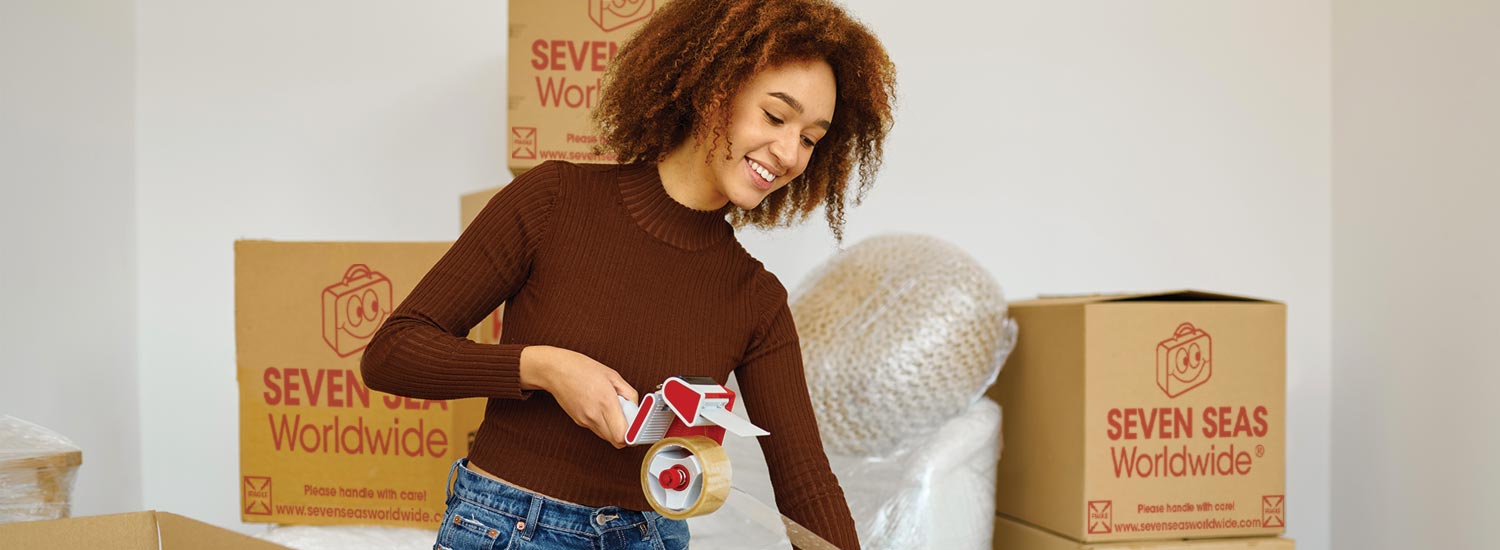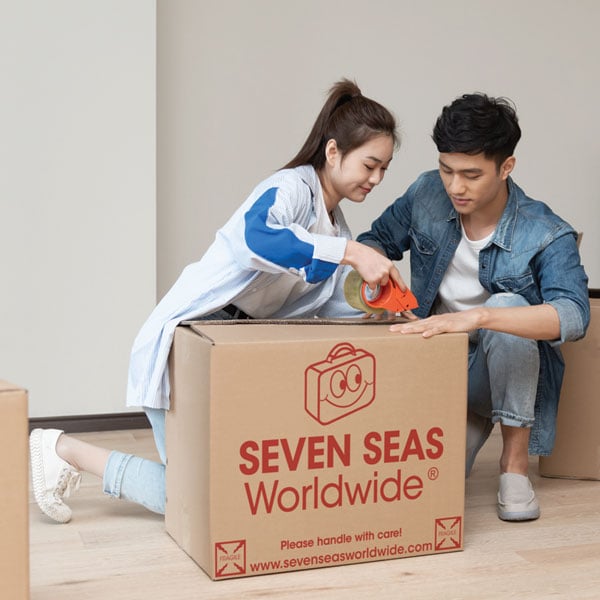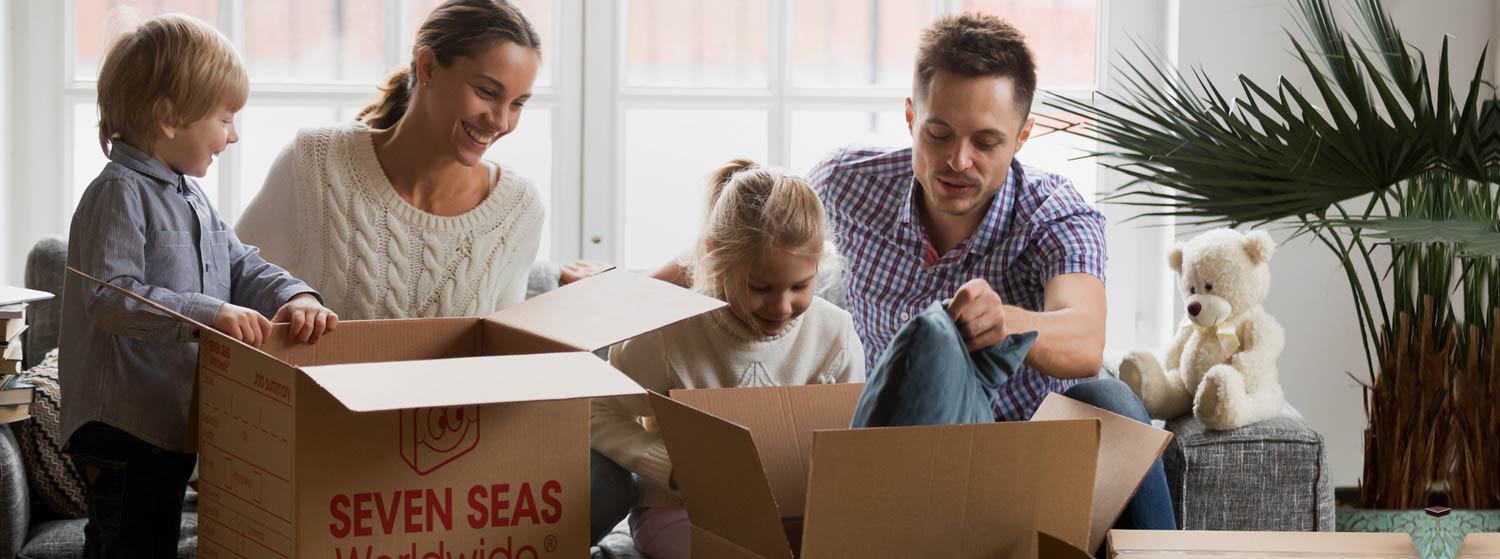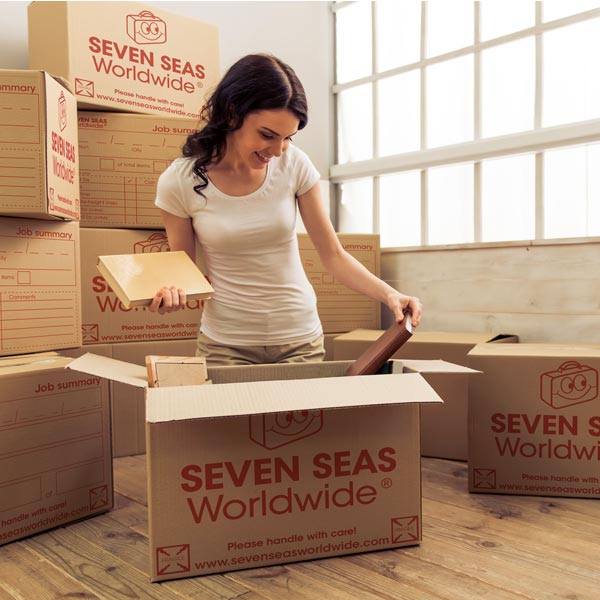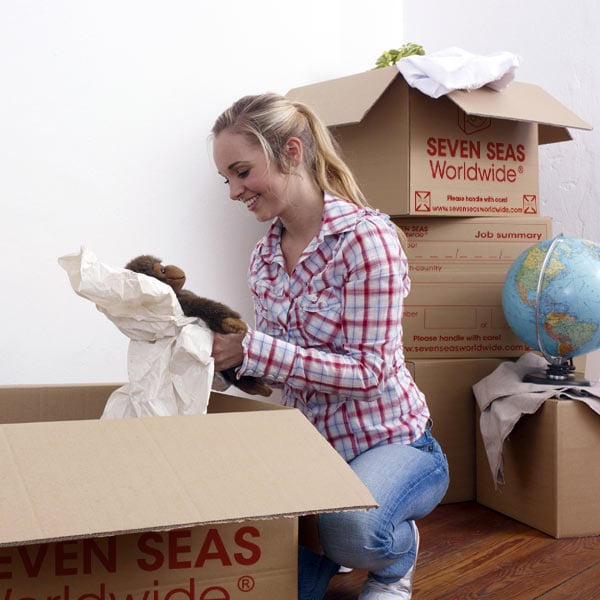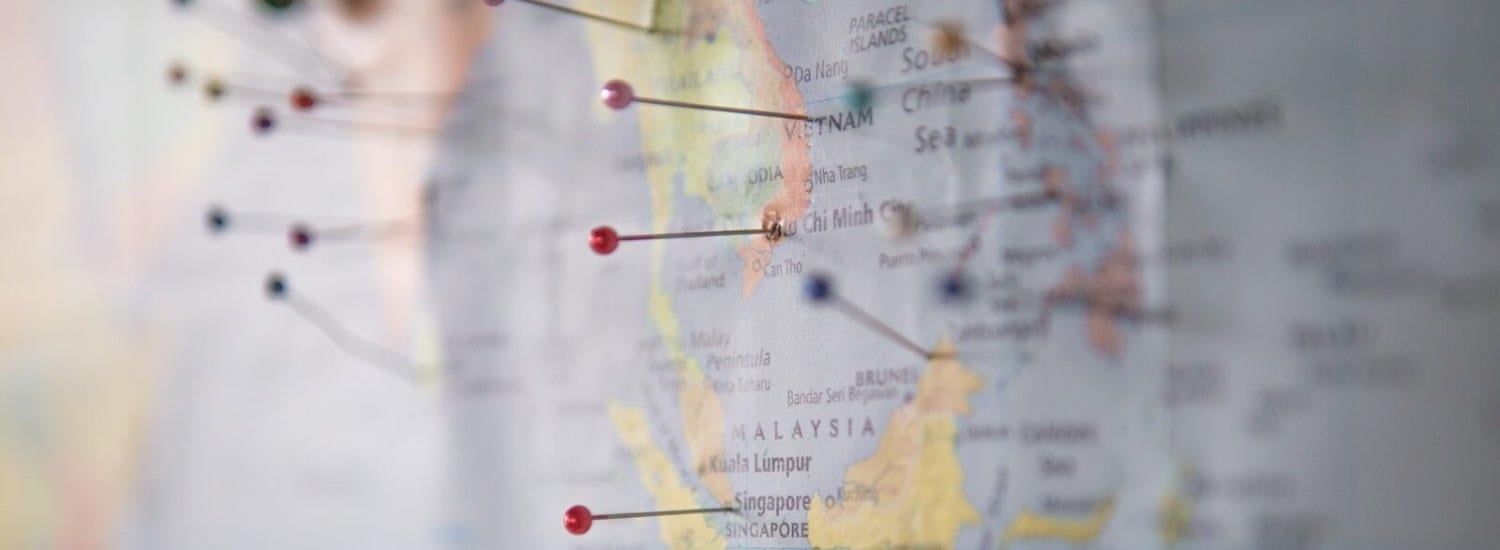Before packing, check this list of items prohibited from entering a particular country or region.
Our ultimate guide to packing boxes
Packing your precious household items to be shipped or stored might seem straightforward. However, there are several essential steps to consider. Your boxes will be moved via road, rail or air and possibly stored for weeks or months. Shipping containers will sometimes deal with rough conditions, so secure packing is a must. For extra peace of mind, consider adding shipping insurance.
Read on for a helpful guide to packing in six easy-to-follow steps.
1. Choose an appropriate box
Our chemically-hardened, double-walled cardboard boxes are purpose-built to transport your goods internationally or be stored for long periods.
As it's better to be safe than sorry, we suggest ordering more boxes than you think you'll need. Then, if you have any left over in like-new condition, we can take them away for free on collection day.
You can also add top-quality materials to your order, including parcel tape and bubble wrap.
There are two sizes available: Standard — height: 31cm, length: 51cm and width: 41cm) and Large — height: 61cm, length: 51cm and width: 41cm.
Our Standard box is best for small, heavy items due to its short and sturdy dimensions. The Large box is ideal for light-yet-bulky goods.
Items commonly packed in a Standard box:
- Books
- Toys
- Tools
- Kitchen appliances
- Games consoles
Items commonly packed in a Large box:
- Clothes
- Blankets
- Bedding
- Shoes
- Teddy bears
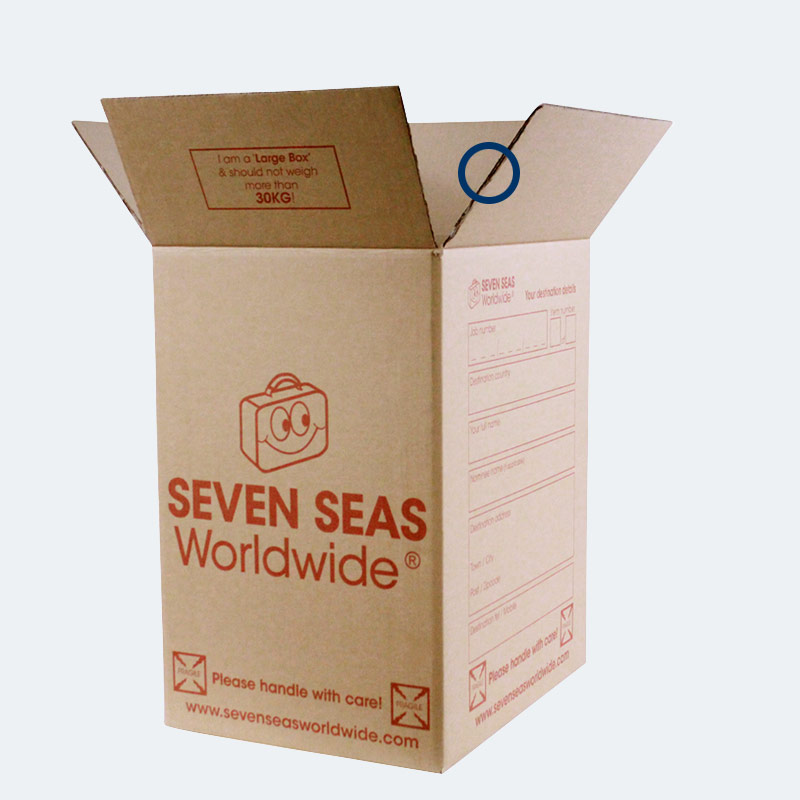
Large box
External dimensions:
61 x 51 x 41cm / 24 x 20 x 16.14 inches
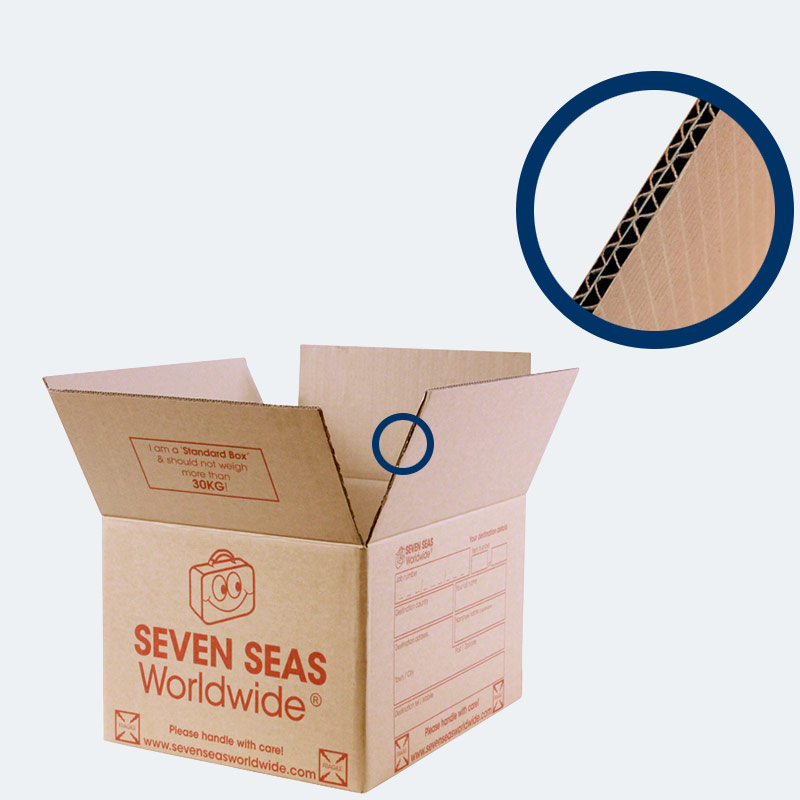
Standard box
External dimensions:
51 x 41 x 31cm / 20 x 16.14 x 12.2 inches
2. Be aware of what you can and cannot send
It's essential you check the customs rules in your destination country when packing to avoid unexpected charges or delays. You may be unable to ship things such as electrical devices or candles depending on the country and your goods' mode of transport. Please reference our list of prohibited goods for clarification on what you can and cannot send.
Avoid packing liquids such as drinks, toiletries, makeup, and creams due to the possibility of spillages and broken glass or plastic harming yourself, the containers, your goods, or our drivers. If unavoidable, place them in a sealable bag to minimise potential damage.
Please note: food is prohibited across all of our services and may not be packed in any container.
Be extra careful when shipping to Australia and New Zealand, as they have stricter quarantine regulations. Thoroughly clean any items potentially dirtied by organic materials, such as shoes, sports equipment and garden tools, and place them at the top of the box for easy inspection.
If the local environmental agency discovers contamination, they'll either ask you to pay for your belongings to be cleaned or, potentially, destroy them.

3. Sealing the base of your box
It all begins with a solid foundation. Correctly assembling your box greatly increases the likelihood of a safe journey for your precious household items.
Follow these simple steps for a tightly wrapped base:
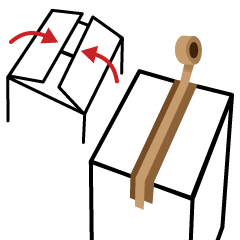
Holding the bottom of your box, place the smaller folds down, then the larger folds.
Seal with parcel tape three times, each new strip slightly overlapping the previous one.

Next, seal the two exposed edges at the sides with a strip of tape each.
Make sure the tape half covers both the bottom of the box and the side, then seal.

Finally, wrap all the way around the bottom four sides for increased security.
When sealing the lid after filling the container, follow the same process.
4. Box packing basics
It might be tempting to pack in a rush. We all lead busy lives and can be guilty of putting things off till the last minute. However, please avoid panic-packing.
Grabbing handfuls of items and dumping them into containers will only lead to damage and confusion. Set aside plenty of time to pack slowly and carefully.
Ensure all items are wrapped individually in cushioning materials such as bubble wrap or packing paper, then seal with tape. Place the heaviest items at the bottom of your container to avoid crushing the contents underneath, and try to distribute your belongings evenly.
When packing clothes, ensure they are clean and completely dry. If even the slightest bit of damp remains, mould will appear and could affect your other items - an increased concern when kept in storage for many months.
Also, be sure to empty kettles and drinking bottles of all contents before packing for the same reason.
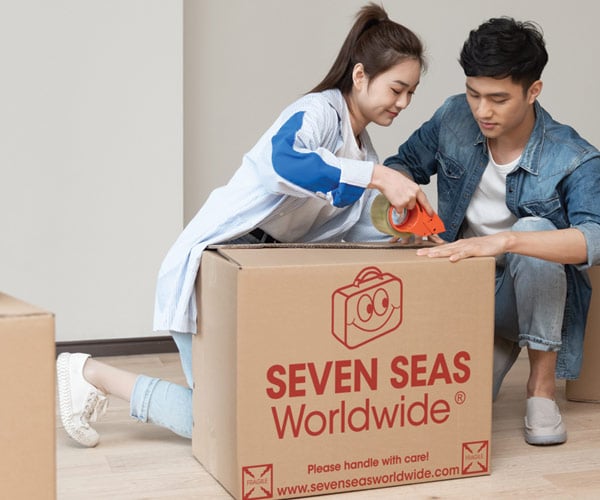
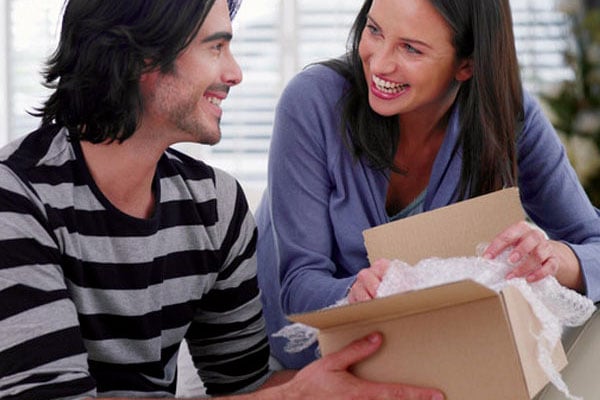
Optimise space wherever possible. For example, use the inside of a microwave for extra packing room. However, be sure to remove the glass tray inside first.
Consider vacuum packing. Tightly pack your clothing in special-made vacuum bags that suck excess air with the aid of a vacuum cleaner. The results are dramatic!
Pack until your box is full, but beware of overstuffing. If needed, move some items to a lighter container. Once you feel a box is full, give it a gentle shake. If you hear anything moving, use more newspaper or packing paper to further stuff gaps.
Seal the lid flat using parcel tape to ensure nothing is sticking out. Finally, weigh each container on bathroom scales. For the safety of both you and our drivers, no box may exceed 30kg/66lbs.
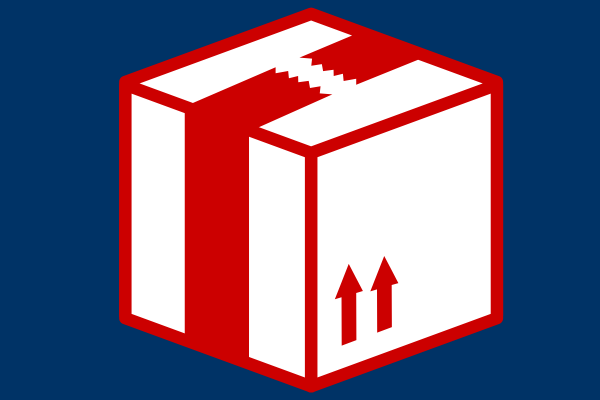
Marking containers with directional arrows
Please note that even if you mark your boxes and bags with "this way up" or directional arrows, we cannot ensure they will remain in a specific position during transit.
Your containers will pass through many different hands and on several modes of transport during their overseas shipping journey, from conveyor belts through processing centres to potentially long periods at sea. And while we promise to handle your belongings with the utmost care, proper packing is the only way to ensure items remain secure inside the container from collection to delivery.
5. Packing fragile items
We want your fragile items, such as plates, bowls, and ornaments, to arrive at their destination in the same condition you packed them. Therefore, we strongly recommend hiring a professional packer. Drawing on years of experience, they will come to your home and methodically wrap and pack all your belongings to an expert level. One less thing for you to worry about!
If packing yourself, cover fragile items in several layers of bubble wrap, surround them with soft materials and place them in the middle of the box rather than resting against the inside walls.
Avoid putting anything fragile or easily breakable next to solid items.
When packing crockery, wrap each plate, cup or bowl individually. Ideally, spread them out over several containers to minimise the chance they might knock into each other. If you must, plates and bowls can be stacked on top of one another as long as several layers of bubble wrap separate them.
If packing glass, electronics with screens, or mirrors, wrap them in a box or a bag.
Finally, once packed, don't forget to give your box a little shake. If you hear movement, stuff any gaps with soft materials such as packing paper or crumpled newspaper.
When packing crockery, wrap each plate, cup or bowl individually. Ideally, spread them out over several containers to minimise the chance they might knock into each other.
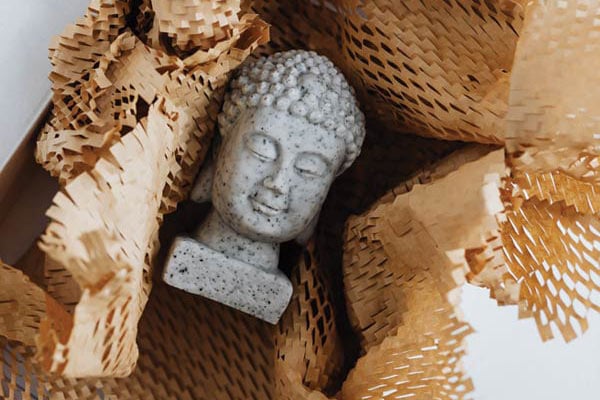
6. Filling out your inventory as you pack
The best way to keep on top of the contents of each box is to itemise as you pack. Inventories are mandatory to help customs officials identify anything that might need to be inspected. Access your online Inventory Packing List by logging into your Seven Seas Worldwide account.
Avoid vague box descriptions such as "random things" or "bedroom stuff." Accurate packing lists help you remember exactly what is in each box — handy for unpacking and helpful for customs officials who sometimes conduct random inspections.
Finally, using a marker pen, write your job number, box number, and destination country and city on two sides of each box. Ensure these accurately match the details on your Inventory Packing List.

